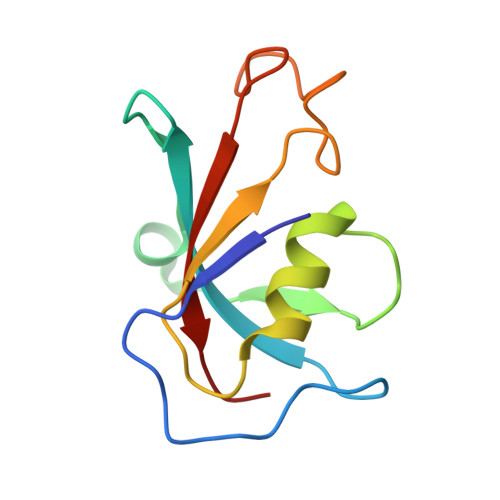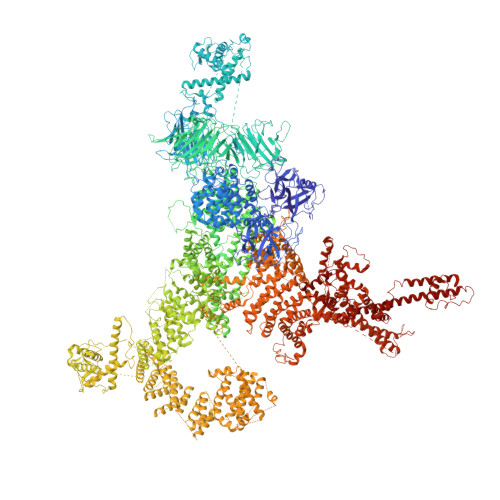Pathological conformations of disease mutant Ryanodine Receptors revealed by cryo-EM.
Woll, K.A., Haji-Ghassemi, O., Van Petegem, F.(2021) Nat Commun 12: 807-807
- PubMed: 33547325
- DOI: https://doi.org/10.1038/s41467-021-21141-3
- Primary Citation of Related Structures:
6W1N, 6X32, 6X33, 6X34, 6X35, 6X36 - PubMed Abstract:
Ryanodine Receptors (RyRs) are massive channels that release Ca 2+ from the endoplasmic and sarcoplasmic reticulum. Hundreds of mutations are linked to malignant hyperthermia (MH), myopathies, and arrhythmias. Here, we explore the first MH mutation identified in humans by providing cryo-EM snapshots of the pig homolog, R615C, showing that it affects an interface between three solenoid regions. We also show the impact of apo-calmodulin (apoCaM) and how it can induce opening by bending of the bridging solenoid, mediated by its N-terminal lobe. For R615C RyR1, apoCaM binding abolishes a pathological 'intermediate' conformation, distributing the population to a mixture of open and closed channels, both different from the structure without apoCaM. Comparisons show that the mutation primarily affects the closed state, inducing partial movements linked to channel activation. This shows that disease mutations can cause distinct pathological conformations of the RyR and facilitate channel opening by disrupting interactions between different solenoid regions.
Organizational Affiliation:
University of British Columbia, Department of Biochemistry and Molecular Biology, Life Sciences Centre, Vancouver, BC, Canada.





















